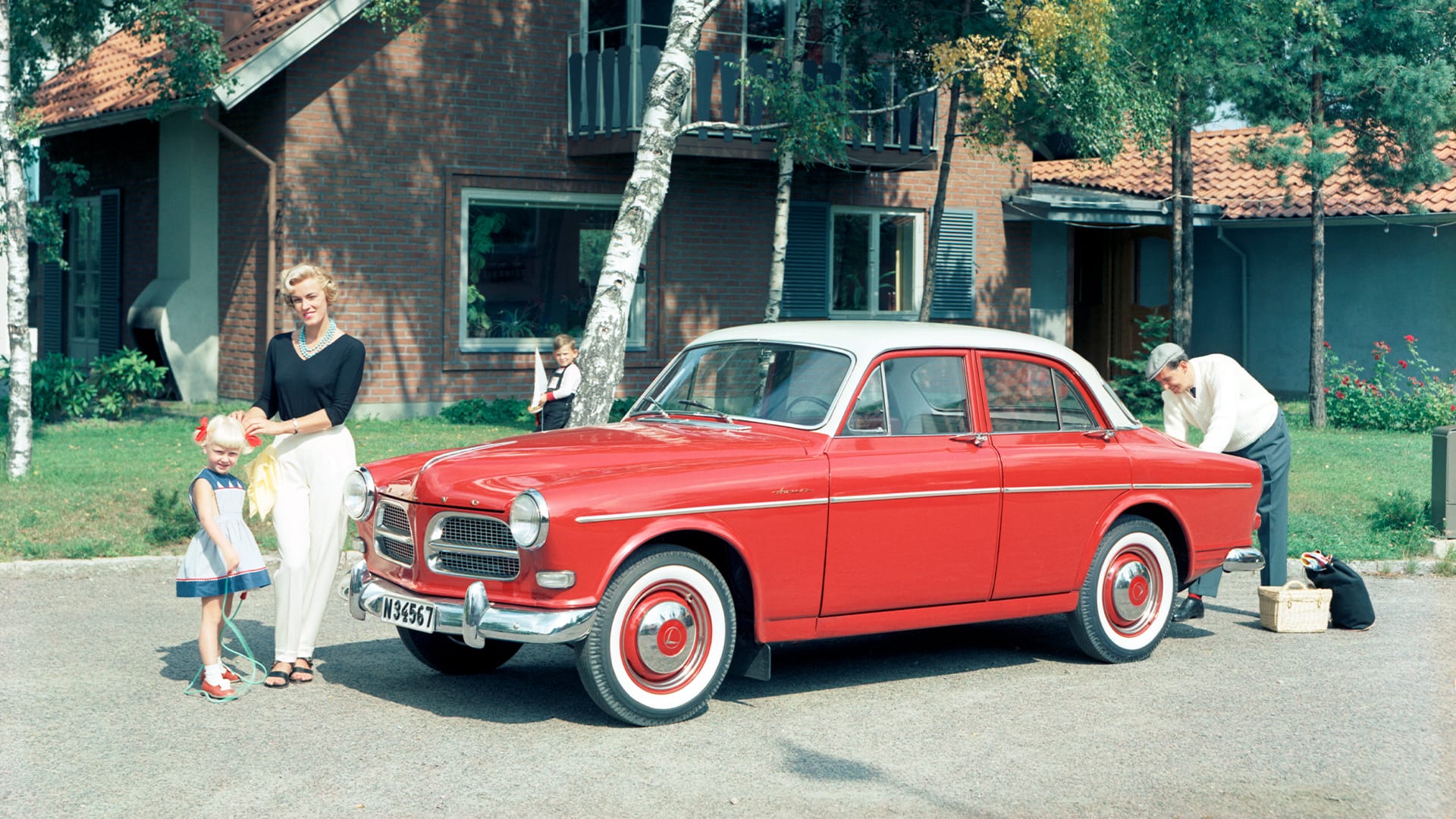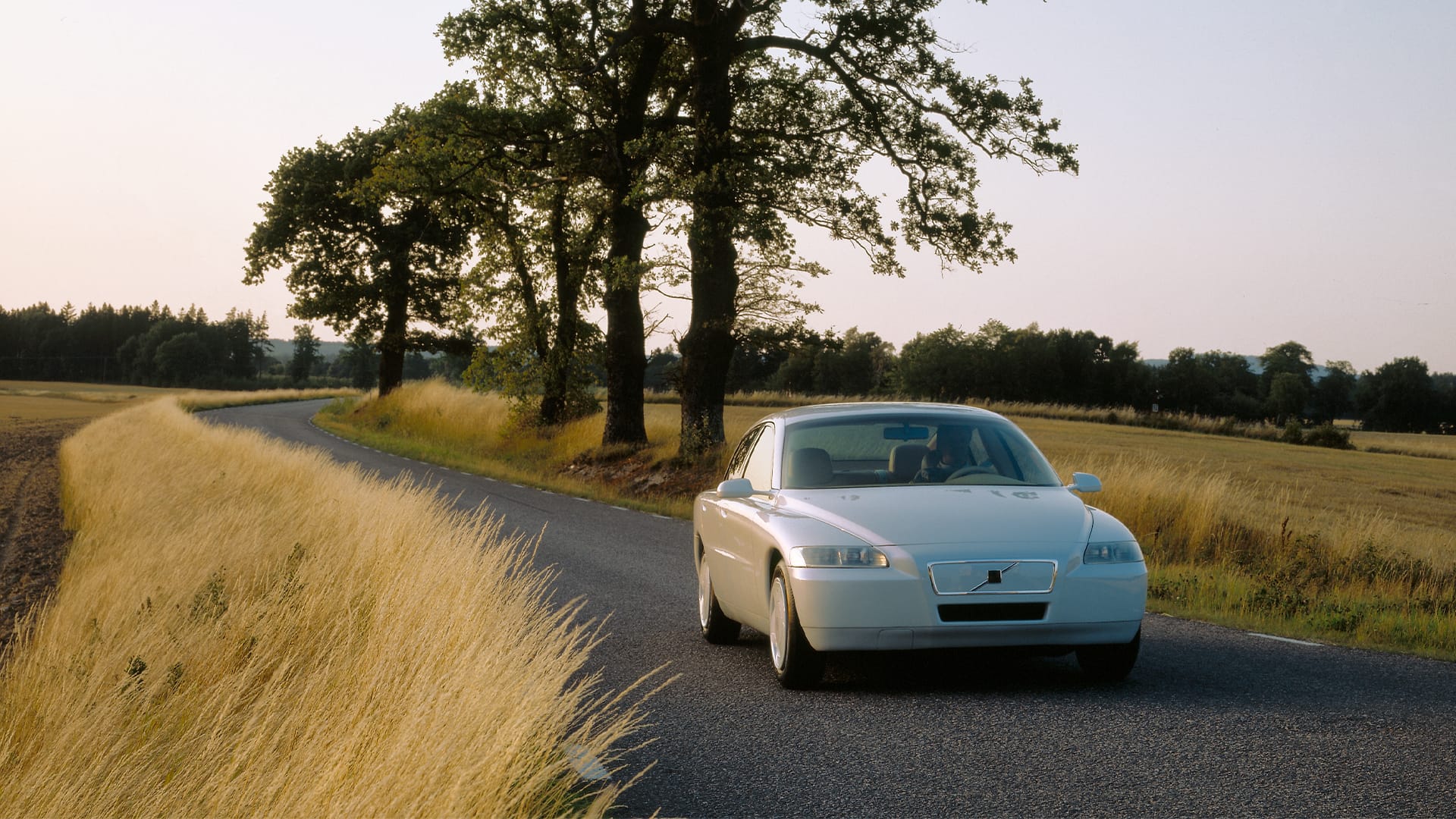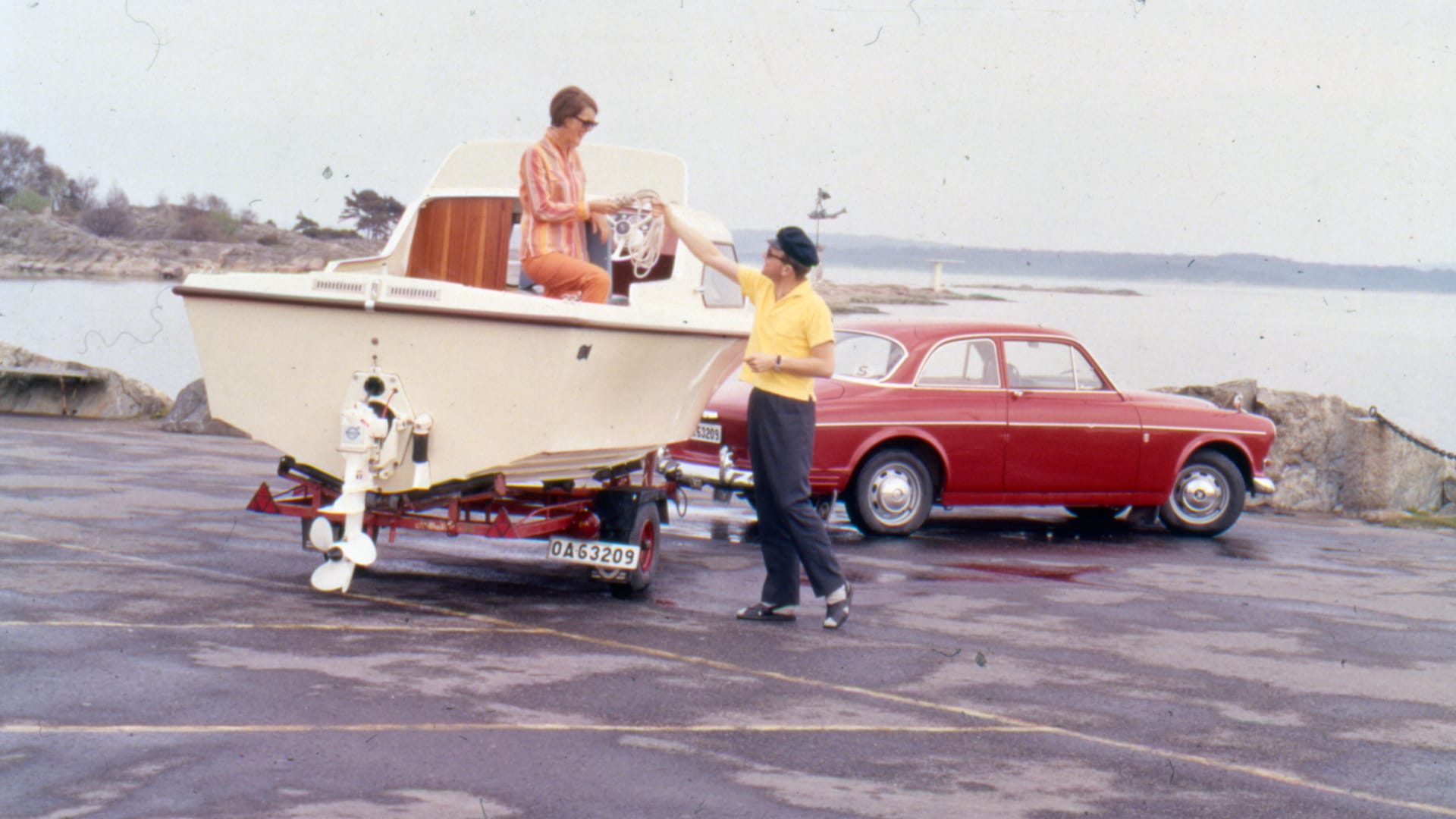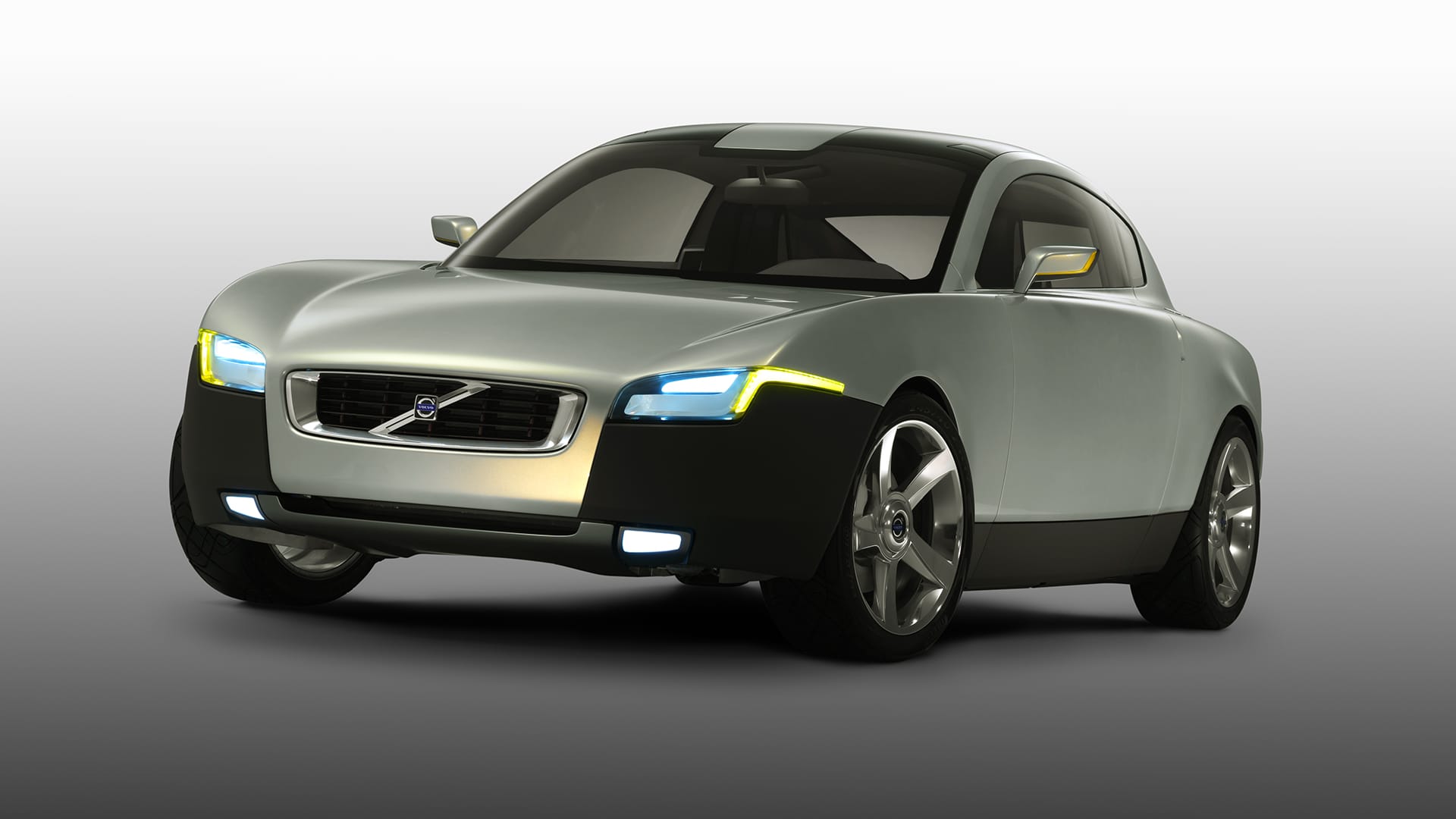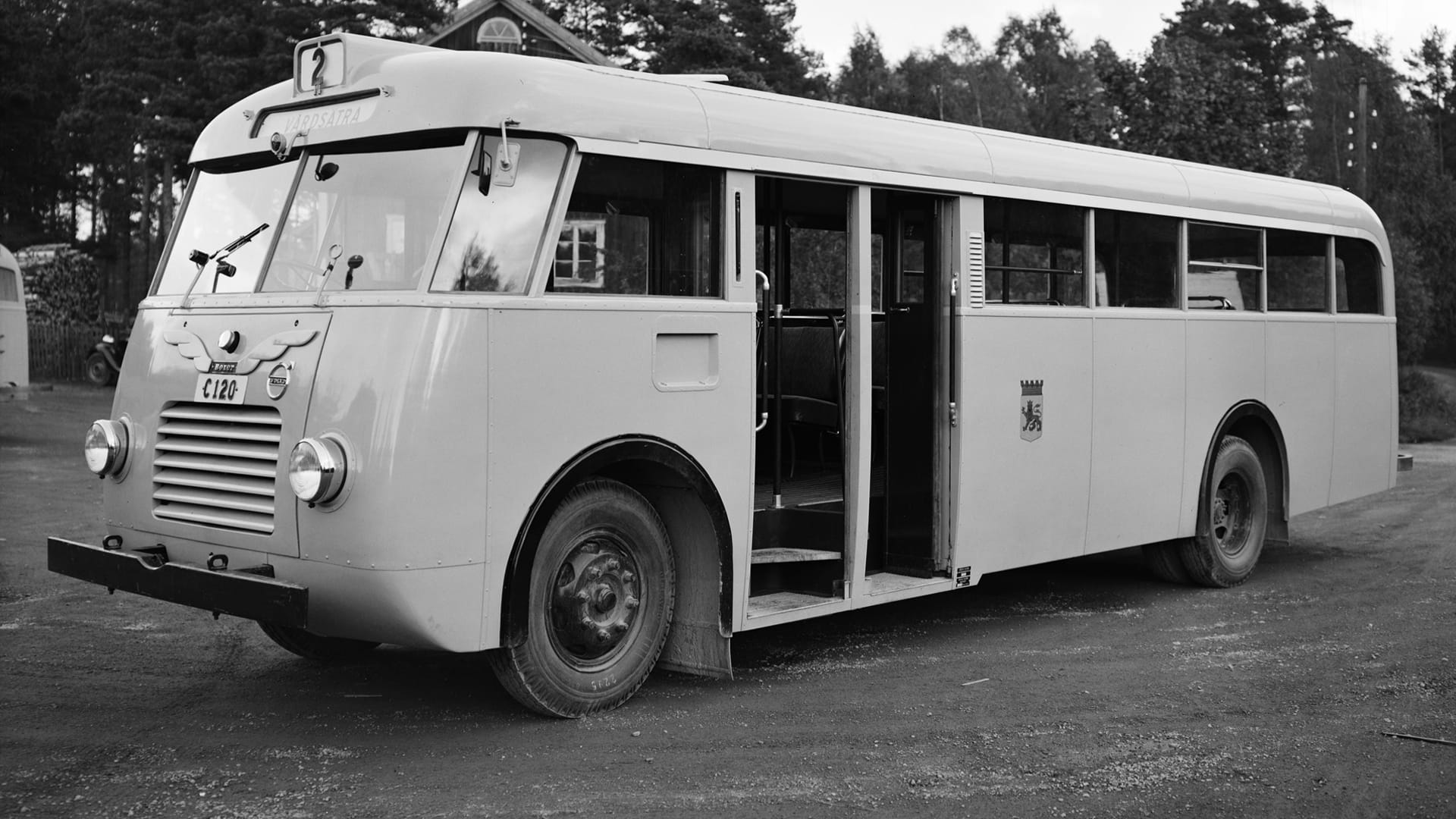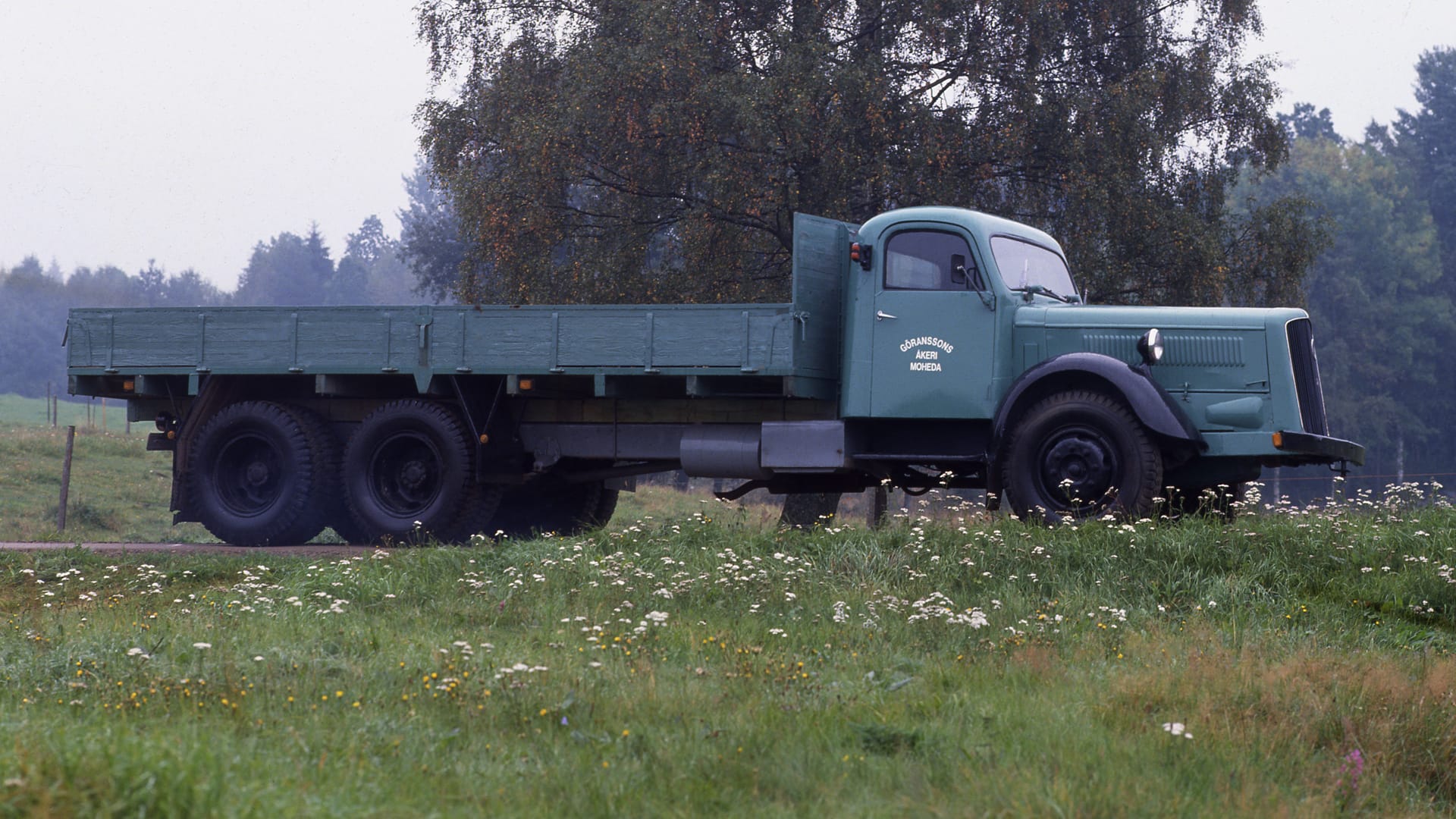Volvo 200 Series

An icon in the USA
ABBA triumphs in the Eurovision Song Contest with "Waterloo," Björn Borg secures his first Grand Slam title at the age of 18, and in the same year, just one year after the oil crisis, Volvo unveils the new 240 model. It's a refinement of the 140, drawing on both design and safety cues from the VESC safety car. Much of the car is brand new.
The US National Highway Traffic Safety Administration (NHTSA) confirms that the 240 provides better protection than any other car in its size category, using it as a benchmark for automotive safety standards.
The Volvo 200 series is the most produced model in Volvo's history, with 2,685,171 units of the 240 and 177,402 units of the 260. On May 5, 1993, the last car rolls off the assembly line at the Torslanda plant, having lived for 19 years, ten years longer than planned, a figure that seems almost unbelievable today. Volvo CEO Pehr G. Gyllenhammar personally hands over the keys to the last buyers, Lena and Ulf Smith from Kungsbacka, saying, "We've had the world's safest car, one of the most desirable cars, and a car that is already a living legend and will be even more so in the years to come."
Oil crisis challenges
The 240 model is developed during the first oil crisis. Volvo has already scrapped two projects meant to succeed the 140/160 series: the 1560 and 1720. Instead, in the fall of 1974, the 240 and 260 are introduced, largely based on their predecessors, the 140/160, and designed by Chief Designer Jan Wilsgaard.
All variants simultaneously
For the first time, all body variants are presented simultaneously: the four-door 244 and 264, the estate 245, and the two-door 242. This is because significant portions of the bodies from the windshield to the back of the car are the same as in the final versions of the 140/164. The front end is completely redesigned, clearly inspired by the VESC (Volvo Experimental Safety Car) from 1972.
New engines
The solution provides better space for the engine and better possibilities for distributing crash energy. The simplest version, the 240 (242/244/245 L), retains the B20 engine from its predecessor, but other models are equipped with entirely new engines. The B21 engine still has a cast-iron block, but the cylinder head is made of aluminium alloy and has a cross-flow design – intake occurs on one side, exhaust gases are expelled on the other – all to reduce fuel consumption and emissions. The engine comes in two versions, the B21A with a carburettor and 97 hp and the B21E with fuel injection and 123 hp.
A Swedish-French V6
In the 260 series, there is also a major innovation under the hood: a V6 engine, developed in collaboration with the French manufacturers Peugeot and Renault. In the summer of 1971, they form a jointly owned company with Volvo, Société Franco-Suèdoise des Moteurs PRV – where the last three letters stand for Peugeot, Renault, and Volvo. The two French manufacturers had started a project a few years earlier that was supposed to lead to a V8 engine and had even produced a few prototypes, but then agreed that a V6 was the best option.
Aluminium build
In Volvo's version, the engine is 2,664 cc, cast in aluminium alloy, and has wet cylinder liners and hemispherical combustion chambers. Each cylinder has a chain-driven camshaft, and the angle between them is 90 degrees, which is not optimal for a V6 engine; 60 degrees would be better. However, the engine weighs only 150 kilograms, less than the new four-cylinder engine. In total, there are eight variants of the 200 series, but over the years, several new versions, engines, and even two major facelifts are introduced -the 1981 and 1986 model years. However, in the fall of 1978, a detail is corrected. The threshold to the luggage compartment, which is initially high and bothers many customers, is lowered.
Uncommon coupé
Among the more unusual versions that emerge over the years is the exclusive coupé version, the 262 C, manufactured by the Italian firm Bertone. A total of 6,622 cars are produced between 1977 and 1981. Limousines are also made, including the luxurious 264 Top Executive 264 TE, and the 245 T, both being extended by 70 cm.
Among the new engine options available in 1979 is a six-cylinder diesel engine developed in collaboration with Volkswagen, which also exists as a five-cylinder for certain markets. When the 245 Turbo is launched in the USA in 1981, it becomes the fastest five-door car on the market. A few years later, Thomas Lindström and Gianfranco Brancatelli win the standard car class of the European Touring Car Championship (ETCC) with a 242 Turbo.
240: Leading the USA emission
However, it is emissions control and safety for which the 240 becomes most famous, rather than racing performance. In the fall of 1976, Volvo delivers the first cars in the 200 series with lambda sensors and three-way catalytic converters, reducing harmful hydrocarbons, carbon monoxide, and nitrogen oxides by a full 90 percent. The following year, Volvo receives the National Environmental Industry Award in the USA, and in 1978, the California Air Resources Board (CARB) names the Volvo 240 the cleanest car in the market. The 240 is even more famous and respected for its safety. Many of the constructions in the 200 series come from the VESC safety car of 1972.
New crash test facility
That year, Pehr G. Gyllenhammar inaugurates an advanced crash test facility in Gothenburg, which also provides valuable insights into how safety should be engineered: safety cages, crash-resistant bumpers, systems preventing the engine block from intruding into the cabin during a crash. Gyllenhammar has personal experience of the latter, following a crash involving an Amazon. Later on, Gyllenhammar himself drives several 240-series cars, including a custom-made red 244 Turbo with a red interior.
Best protection
In the USA, the National Highway Traffic Safety Administration (NHTSA) conducts a series of crash tests with the 240 and several competitor cars, confirming that the Volvo provides by far the best protection for the occupants. The 240 becomes a standard car for ongoing work on crash safety in the USA. The results form the basis for future safety regulations covering all cars sold in the American market.
Awards galore
The Volvo 240/260 also receives a slew of awards for its safety, such as the Swedish Motorists' Gold Medal – for its hazard lights and two-circuit brake system with step cylinder -, and the Don Safety Trophy in the UK - for traffic safety-promoting efforts and designs beyond legislation. For four years in the late 1980s, the Volvo 240 estate is the safest car in its size category in the USA, according to the Highway Loss Data Institute (HLDI).
Not sexy. Boxy.
Naturally, Volvo uses safety in its marketing in the American market. In the shadow of the rapid spread of AIDS, an advertisement reads: "Buy Volvos. They’re boxy but they’re good. We know they’re not sexy. This is not a smart time to be sexy anyway, with so many new diseases around. Be safe instead of sexy. Volvo – Boxy but good."
Cult classics
Towards the end of its lifecycle, a range of special editions is launched, becoming cult classics in several markets, especially the 240 Polar in Italy. The Volvo 245 ultimately becomes a symbol not only for the Volvo brand but also for the Swedish model. It stands for security, reliability, and responsibility for safety and the environment like no other car has done.
After 19 years and nearly 2.9 million cars produced, the last 240 – a Super Polar is manufactured in 1993 and can now be seen in the World of Volvo exhibition.








